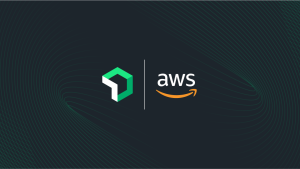In many organizations, database ownership lies with a central infrastructure or dedicated DBA team, separate from the application development effort. While application performance monitoring (APM) provides valuable insights, these central teams need the ability to instrument and visualize database load and performance directly, without relying on APM agents. They need to see not just that a database is slow, but precisely why it's slow, with query-level detail.
Today, we’re excited to announce the General Availability of enhanced Database Performance Monitoring in New Relic. With this launch, you can now capture deep query-level details directly from your database instances.
This enhancement to our On-Host Integration (OHI) gives you detailed visibility into slow queries, grouped query details, database wait types, and query execution plans for your MySQL, Microsoft SQL Server, and PostgreSQL databases. It empowers DBA and infrastructure owners to find and fix performance bottlenecks faster, improving the reliability and performance of the services that depend on them.
Go beyond APM for a complete database view
For a dedicated DBA, understanding database performance shouldn't require access to application code or agents. The core problem is that a database is a shared resource, and the team that manages it needs a toolset focused on its specific performance characteristics. Our enhanced OHI provides those query-level insights directly from the database instrumentation, giving DBAs the autonomy and data they need to ensure performance and reliability for all the applications that consume their service.
Pinpoint bottlenecks with wait types and explain plans
When an application is slow, the root cause is often an inefficient query. To solve this, you need more than just metrics; you need to understand exactly why a query is performing poorly. We now scrape detailed information including wait types and the actual query execution plans. This means you can move from identifying a slow query to understanding its specific waits and analyzing its execution plan, dramatically reducing the time it takes to diagnose and resolve the issue.
Simplify monitoring across your hybrid estate
Your database infrastructure likely spans on-premise servers and cloud environments. This new functionality supports self-hosted MySQL, PostgreSQL, and Microsoft SQL Server databases and also includes AWS Aurora/RDS compatibility. This allows you to standardize your deep database monitoring on New Relic across your entire hybrid estate.
Getting started is designed to be a straightforward, practitioner-oriented experience.
- Navigate to the guided install process under Integrations & Agents in New Relic One.
- Select your database type (MySQL, PostgreSQL, or Microsoft SQL Server).
- Follow the step-by-step guide to deploy the On-Host Integration (OHI) into your environment where your database is hosted. The process can be done manually or automated with the New Relic CLI.
- Once the instrumentation is installed and sending data, you can view the detailed performance data on single-entity pages or multi-entity dashboards.
More Information
For more detailed installation instructions and further information on specific database types, please refer to the New Relic documentation:- Microsoft SQL Server: Install Microsoft SQL Server
- MySQL: Install MySQL
- PostgreSQL: Install PostgreSQL
Next steps
- Read the docs to get detailed instructions for installing and configuring the On-Host Integration for your specific database.
- Sign up for New Relic. Your free account includes 100 GB/month of free data ingest, one free full-access user, and unlimited free basic users. All data from this integration is charged as paid ingest.
The views expressed on this blog are those of the author and do not necessarily reflect the views of New Relic. Any solutions offered by the author are environment-specific and not part of the commercial solutions or support offered by New Relic. Please join us exclusively at the Explorers Hub (discuss.newrelic.com) for questions and support related to this blog post. This blog may contain links to content on third-party sites. By providing such links, New Relic does not adopt, guarantee, approve or endorse the information, views or products available on such sites.



